| ingredient | quantity |
|---|---|
| yeast | 0.5 g |
| water | 150 g |
| flour | 200 g |
| salt | 4 g |
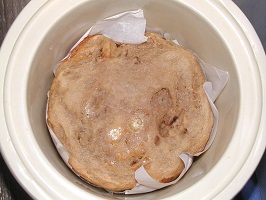
After some experimenting, here's the main recipe I use to make "no-knead" bread in my crockpot, with some notes & tips.
|

|
This makes a loaf that's about half the weight of a standard grocery loaf.
Some references stress the need to be very precise with quantities, however I've found that's not the case, and "close" is good enough,
so please don't stress if you add a wee bit "too much" of anything. :)
This produces a loaf which weighs about 300g, which is about half the mass of a "regular" store bought loaf.
I usually keep the leftovers (if any) of my loaf in my crockpot (with lid on & covered by a washcloth), and it's good for 2 to 4 days.
I generally eat it all within 3 days, often less. :)
Instead of regular salt, I use one ramen flavoring packet, the contents of which weigh almost exactly 5 grams.
Apparently there's 388 mg of sodium per 1 g of salt, and there's 1440 mg of sodium in a ramen packet, so that's 3.7 g of salt per ramen packet.
That's close enough to the 4g of salt in the recipe.
Plus, no measuring/messing-about/accidents, FTW! :)
When I make ramen, I only use half of a packet, so I have plenty of them, and using them in Bread helps use them up.
My first few loaves were a quarter of the recipe at Wikipedia.
I've now standardized on half the original recipe,
which works well with my quart-sized crockpot.
It was a tight fit for my cereal sized bowl, however
I've since found bowls that are twice that size, made of the same easy-to-clean material & also available at Dollar Tree.
I sometimes let the dough rise overnight in the crockpot.
That can be easier, unless you want to add extras after the long rise.
I usually don't bother with the "2nd rise", instead I just briefly inspect the dough before turning on the power. :)
This works due to the long cooking time.
Wait until your solar system has reached at least "Acceptance", ideally "Float".
My controller indicates this by rapidly flashing its status light (what I think of as "Happy Flashes").
During summer, this typically occurs (with my system) by noon (often before 10am), and continues until early evening.
FraterSecessus's wiki has an
excellent article explaining the technical aspects.
In a nutshell: during peak sunshine, your system is throwing away most of its output.
Running your crockpot then is "free". :)
Note: I'm assuming you understand your own system capabilities & "normal" day time power usage enough to know that you can safely run your crockpot long enough to bake bread. :)
Here's a real world example (my own system & my normal daytime use):
A 3-pack/strip of yeast contains enough to make 42 "medium" (crockpot sized) or 21 regular loaves,
and the cheapest mainstream cost is $1.14 (Walmart's Great Value house brand).
A 5lb (2270g) bag of flour contains enough to make about 11.3 "medium" or almost 6 regular loaves.
Walmart's price for a 5 pound bag of unbleached all purpose flour is about $2.38,
and their cheapest whole wheat flour is about $3.43.
| ingredient | quantity | current Costs (2024-09) | previous Costs (2020-Jul) |
|---|---|---|---|
| yeast | 0.5 g | $0.027 | $0.027 |
| water | 150 g | ||
| flour | 200 g | $0.211 (all purpose) $0.304 (cheapest whole wheat) |
$0.108 (all purpose) $0.263 (cheapest whole wheat) |
| salt | 4 g | ||
| total cost | $0.24 (all purpose) $0.33 (cheapest whole wheat) |
$0.135 (all purpose) $0.29 (cheapest whole wheat) |
That doesn't include the cost of parchment paper, which is optional.
I bought a name brand roll, reuse each piece about 3 to 6 times,
and the cost works out to less than one cent per loaf/use.
It's definitely optional, however I feel it's worthwhile, particularly for beginners (like me).
It makes it easier to get the loaf/etc out, and makes cleanup much easier. :)
after mixing:
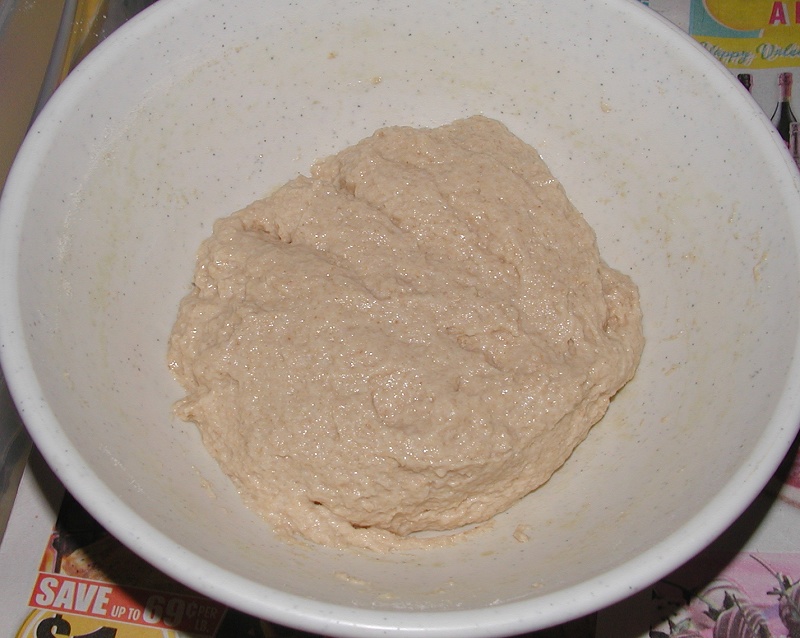
after overnight rise:
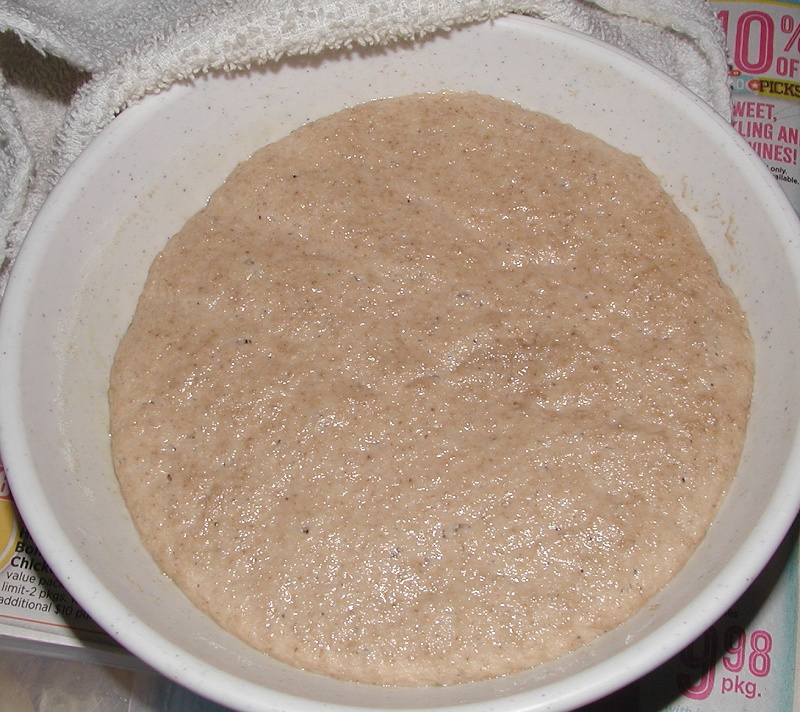
raw dough in crockpot:
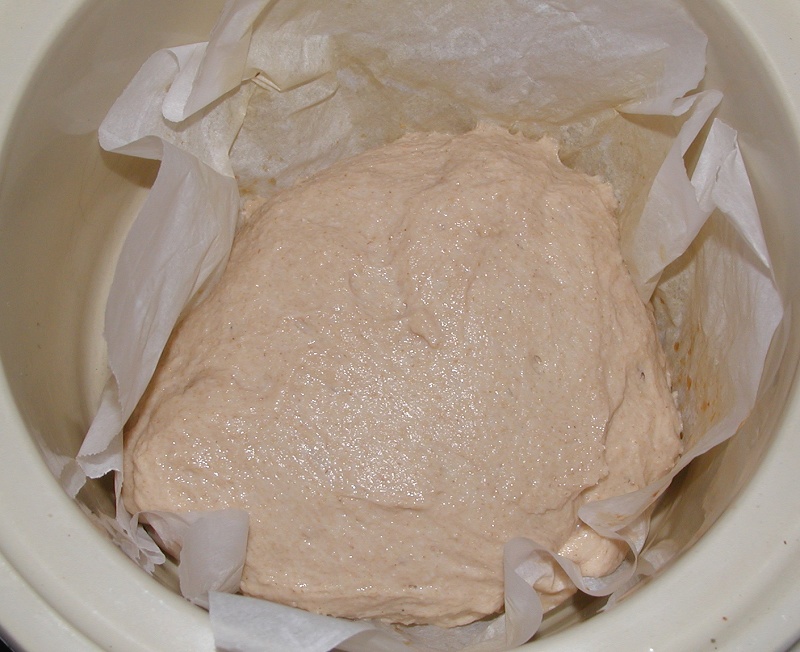
after baking, in crockpot:
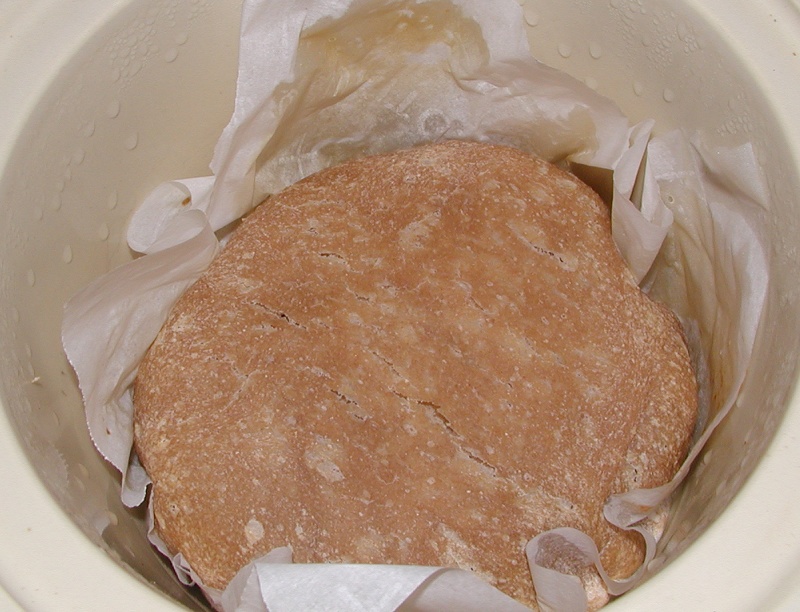
loaf out of crockpot:
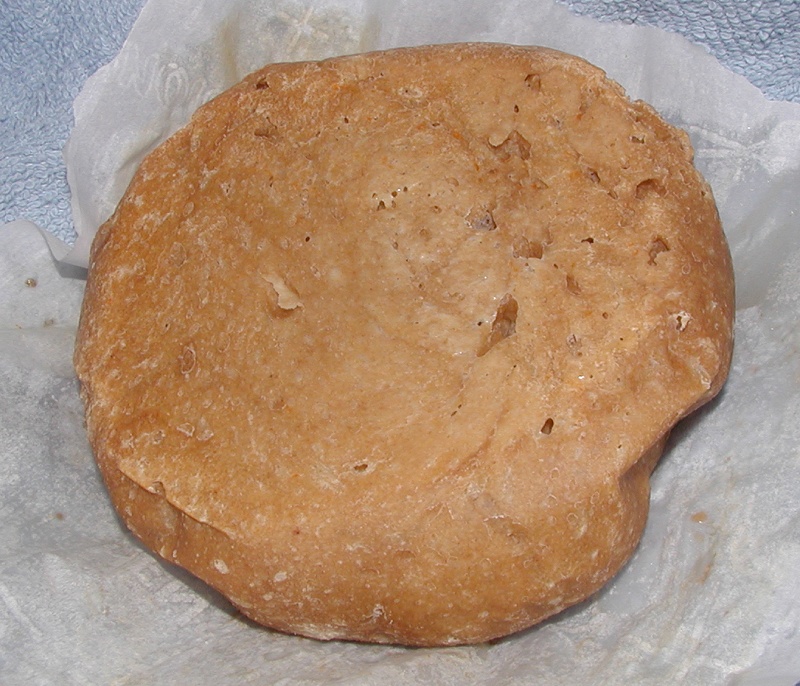
inside of loaf:
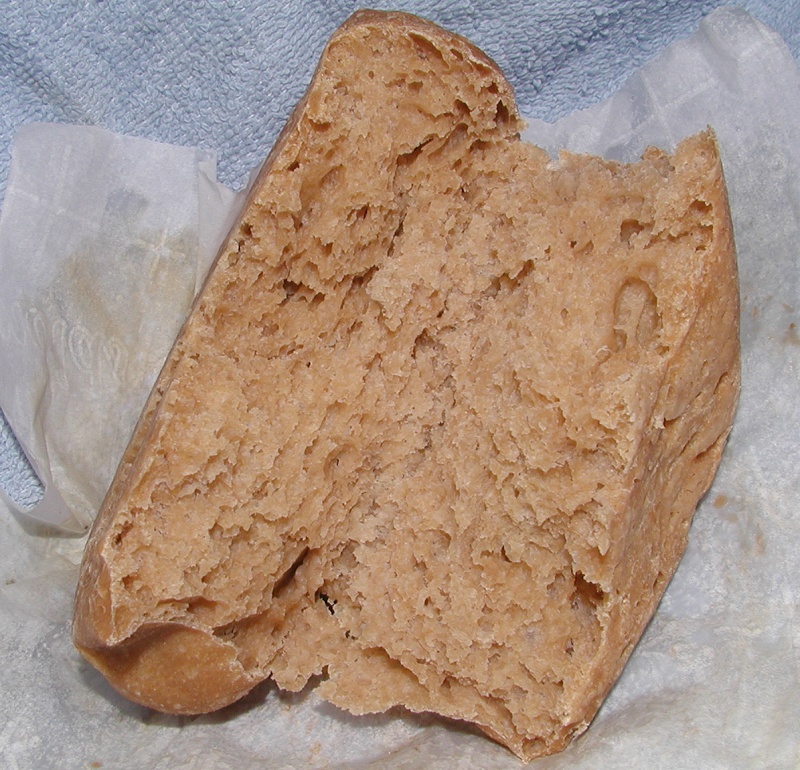
bread with mayo (instead of butter) in pan:
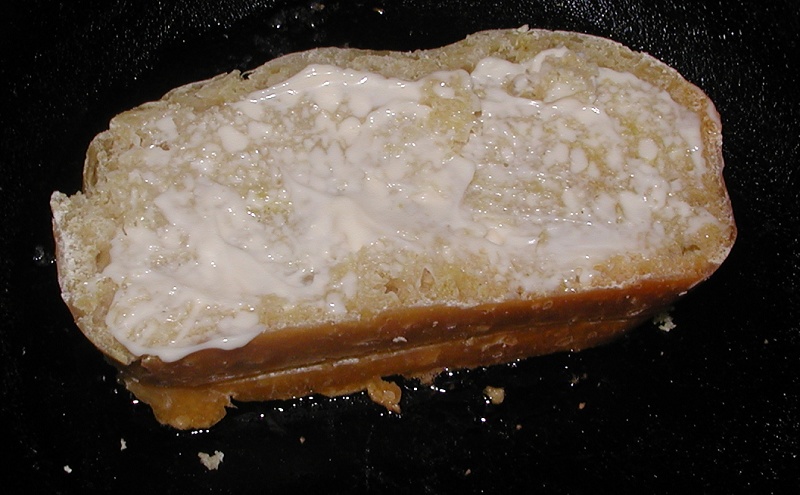
after flipping (grilled side up), in pan:
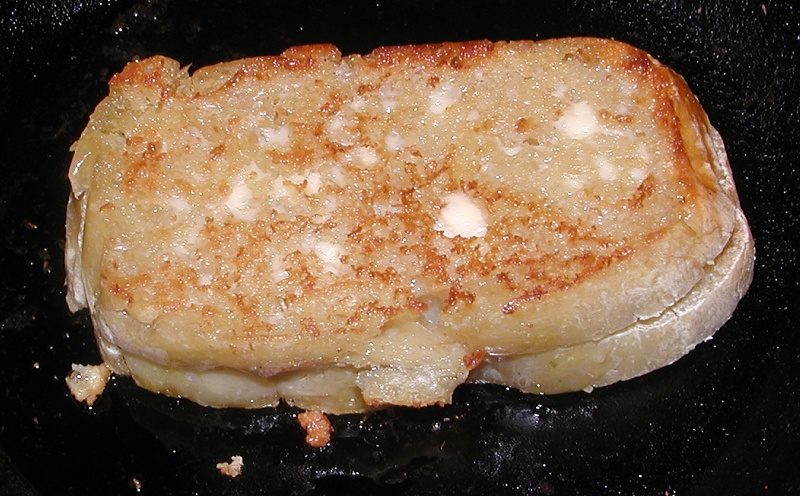
closeup of cross section, showing melted cheese and grilled bread:
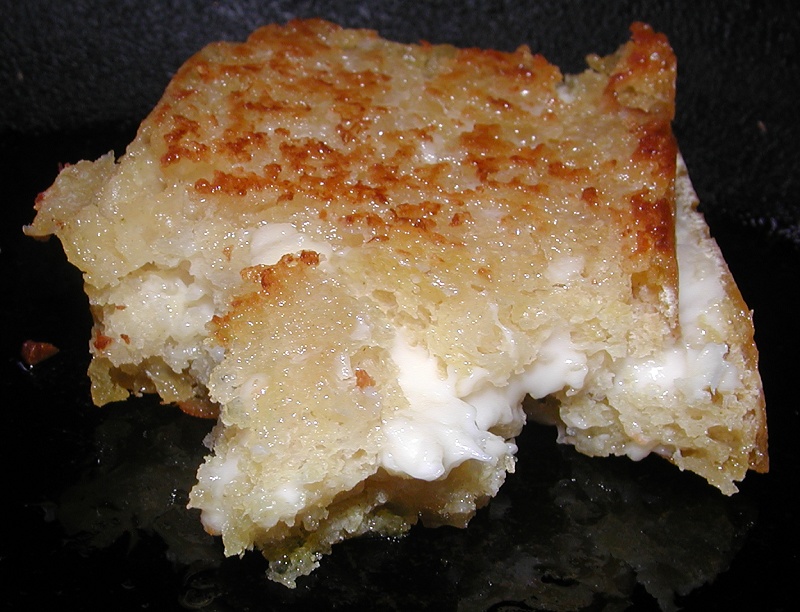
dough after mixing, with cranberries & pumpkin seeds added on top:
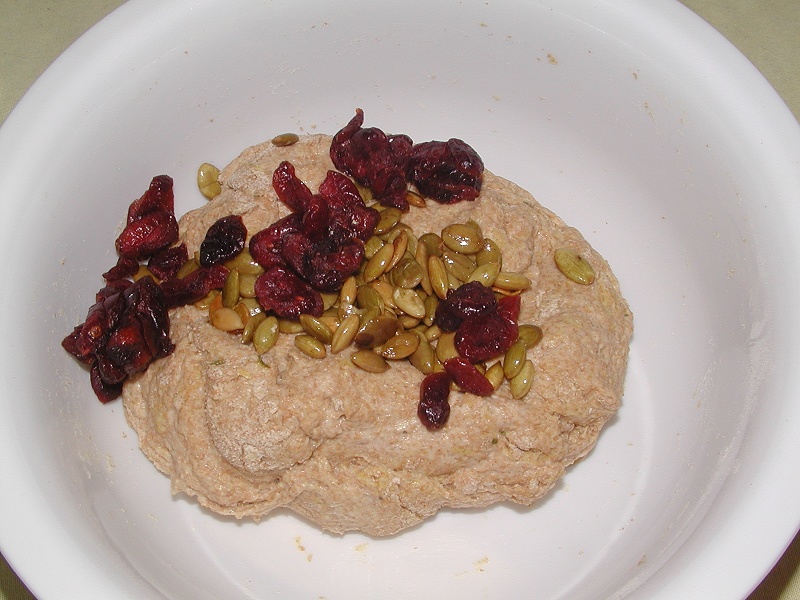
raw dough after rising, in crockpot:
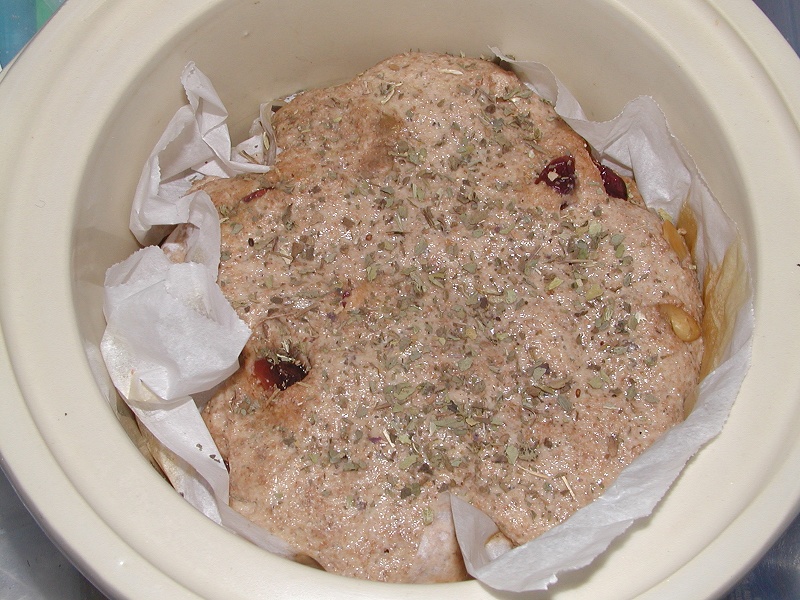
after baking, in crockpot:
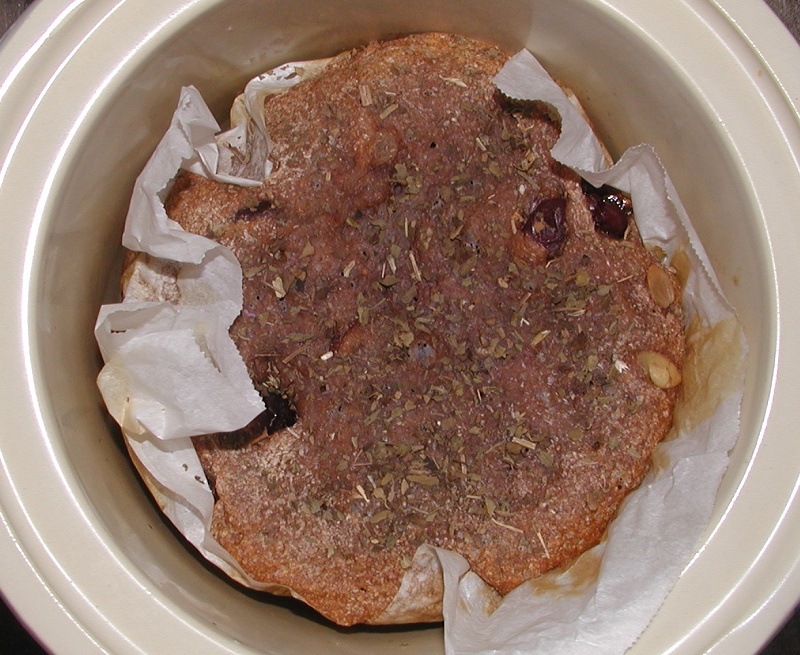
loaf out of crockpot:
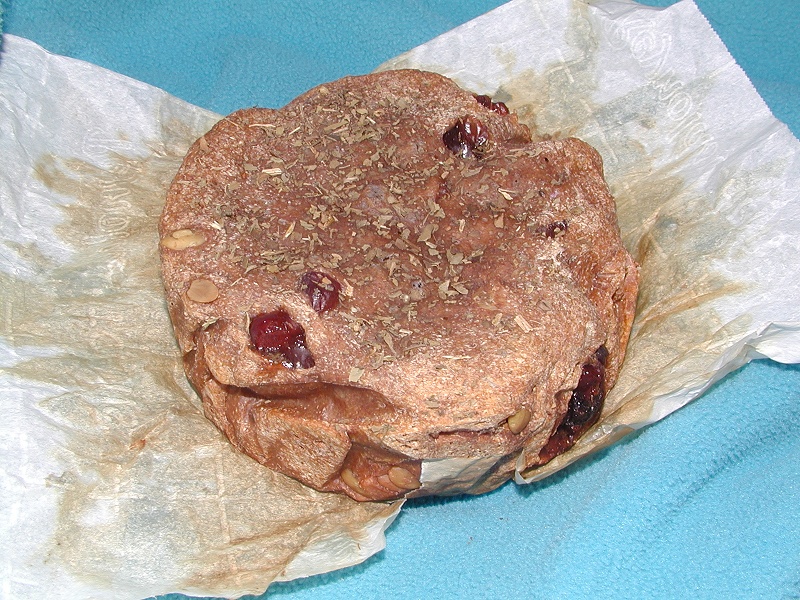
inside of loaf, and open face sandwich (ham and cheese):
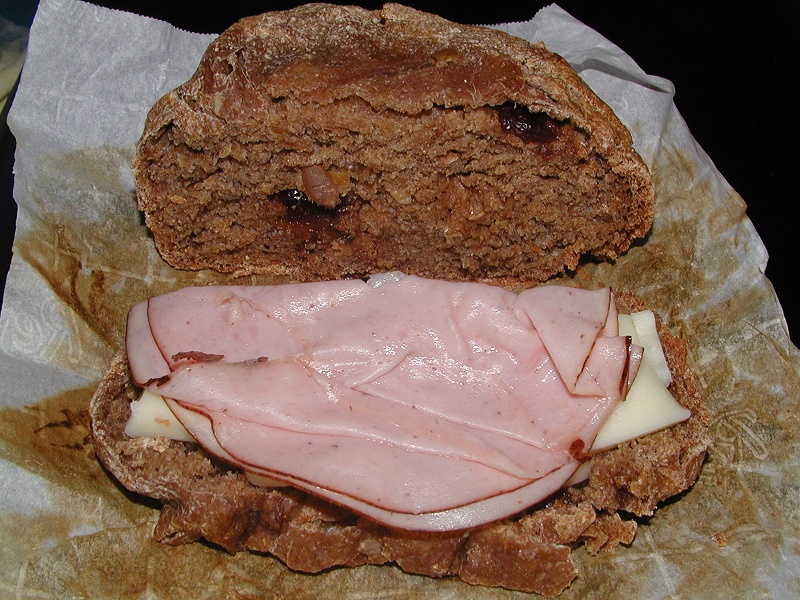
I strongly recommend you first try some less demanding crockpot tasks to be sure it will work with your solar system. :)
Next, start with a plain loaf.
Have low expectations for your first loaf.
It's fun but not mandatory to experiment with additions. It's ok to just make "plain" bread, which is still very satisfying. :)
No knead bread is extremely easy to make, with very little cognitive effort other than remembering when to perform each step.
There's enough flexibility in the timing that a few hours longer "rising"/auto-self-kneading is not a problem.
Crockpot times are also flexible, and leaving it for an extra hour won't burn the bread.
I've found that one doesn't have to be too worried about small variations in quantities.
Having this capability improves flexibility and is a great morale boost. :)
During a National Forest stay in April 2020, I was sheltering-in-place (due to a pandemic),
and ended up staying for 3 and a half weeks with no resupply (that particular Forest has a 30 day dispersed camping limit).
Normally, that would have meant no bread after about the mid point.
With my solar powered crockpot, and new skills,
I was able to make bread as often as I wanted, subject to weather. :)